10 Breathtaking Villages To Explore In The Dolomites
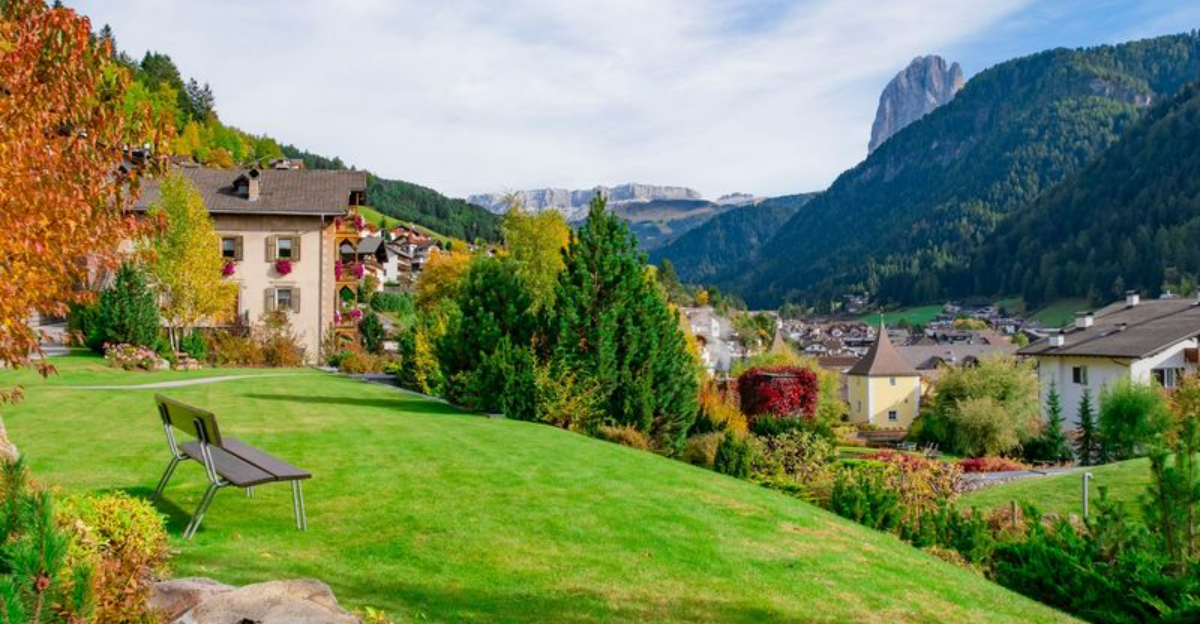
Nestled among the jagged peaks of northeastern Italy, the Dolomites hide some of Europe’s most charming mountain villages. These small communities blend rich Alpine culture with stunning natural backdrops that change colors throughout the day.
I’ve spent years exploring these hidden gems and want to share my favorite spots where traditional Ladin culture, incredible food, and outdoor adventures come together perfectly.
1. Magical Ortisei: Gateway to Val Gardena
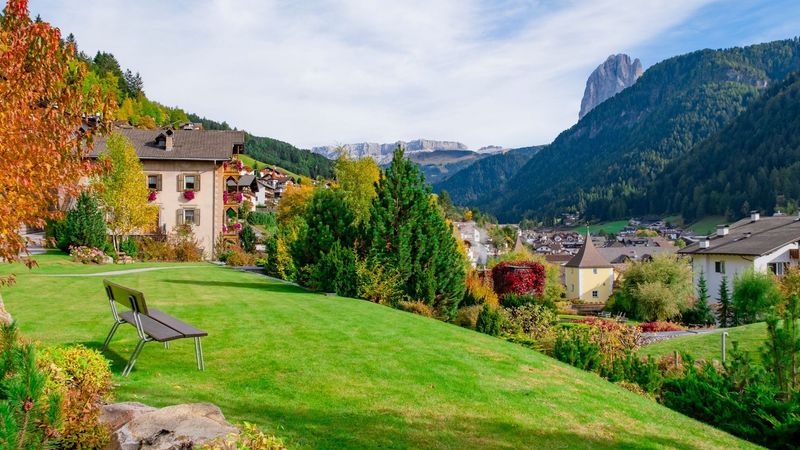
Walking through Ortisei feels like stepping into a storybook. This vibrant village sits at the heart of Val Gardena valley, surrounded by meadows that burst with wildflowers in summer and transform into ski paradises in winter.
Wooden chalets with colorful flower boxes line the pedestrian-only center, where local artisans showcase their famous wood carvings in charming boutiques. I love grabbing a cappuccino at one of the sidewalk cafés and watching the mix of locals and visitors stroll by.
If you’re feeling adventurous, take the cable car up to Alpe di Siusi for breathtaking panoramic views. The village proudly maintains its trilingual heritage, with locals speaking Italian, German, and the ancient Ladin language that originated in these mountains centuries ago.
2. San Cassiano: Culinary Paradise in Alta Badia
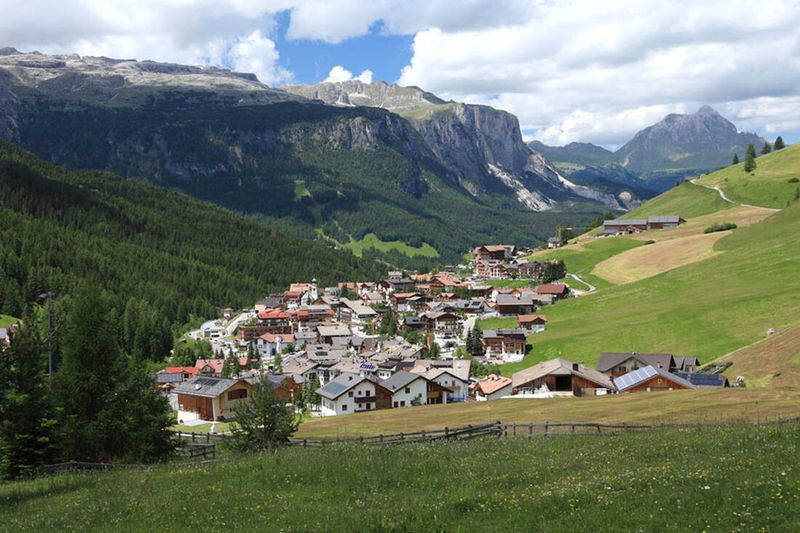
Did you know this tiny village boasts some of the highest concentration of Michelin stars in Italy? San Cassiano combines rustic mountain charm with sophisticated dining experiences that draw food lovers from around the world.
Morning light here paints the surrounding peaks in soft pinks and golds, creating a magical atmosphere for early risers. The village maintains its traditional Tyrolean architecture while housing luxury hotels that blend seamlessly into the landscape.
During summer, I recommend hiking through meadows dotted with grazing cows wearing traditional bells. Winter transforms San Cassiano into a skier’s dream with direct access to the Sella Ronda circuit. Don’t miss trying the local specialty, casunziei – half-moon pasta filled with beetroot and topped with poppy seeds.
3. Timeless Selva di Val Gardena: Adventure Seeker’s Haven
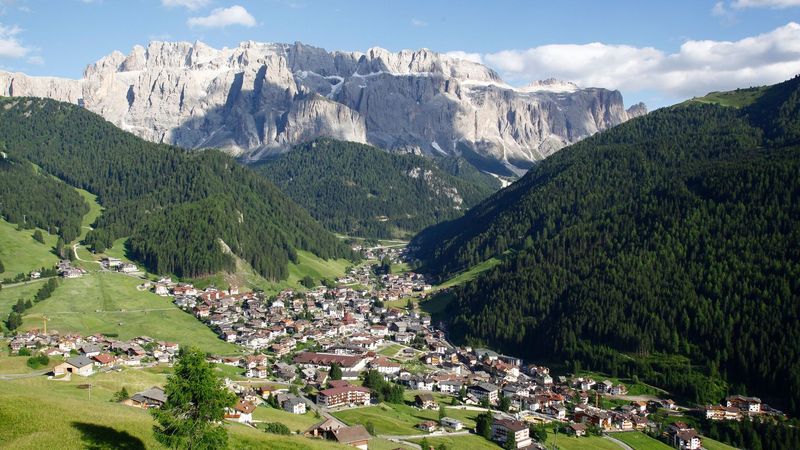
Adrenaline enthusiasts flock to Selva year-round for its perfect blend of extreme sports and peaceful mountain living. This village sits higher than its neighbors, offering unmatched access to some of the Dolomites’ most dramatic landscapes.
Traditional wooden barns with distinctive sloped roofs designed to shed heavy snow stand alongside modern hotels. The sound of cowbells often mingles with laughter from outdoor cafés where hikers and climbers gather to share stories of their mountain conquests.
My favorite morning ritual here involves grabbing freshly baked apple strudel from the local bakery before heading out on the trails. When evening falls, the village transforms as alpenglow bathes the surrounding peaks in fiery orange light, creating a surreal backdrop for dinner at one of the family-run restaurants serving hearty mountain fare.
4. Enchanting Castelrotto: Medieval Charm Frozen in Time
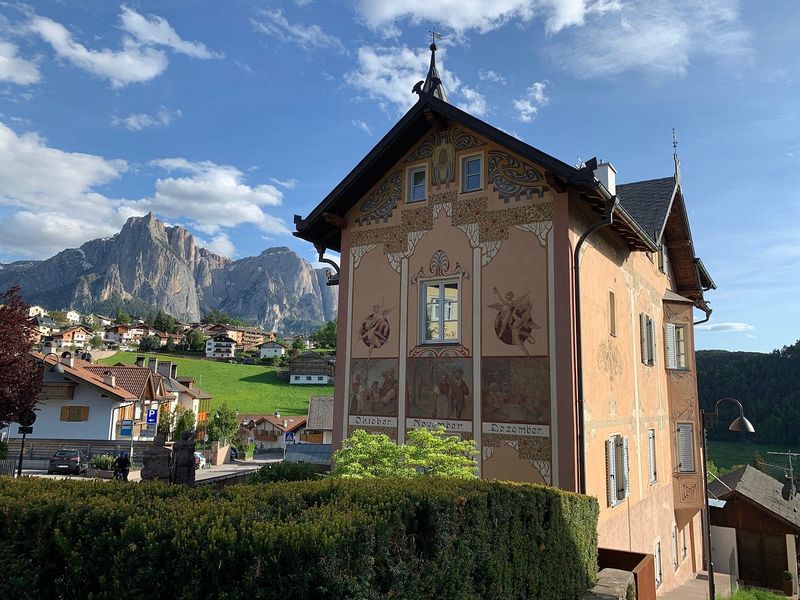
The moment you spot Castelrotto’s whitewashed church tower piercing the sky, you’ll understand why this village captivates photographers and history buffs alike. Unlike some of its more tourism-focused neighbors, Castelrotto maintains an authentic rhythm of daily life that hasn’t changed much over centuries.
Frescoed buildings featuring intricate murals depicting religious scenes and folklore create an open-air museum atmosphere. Farmers still bring their produce to the weekly market in the main square, where locals catch up on village gossip while shopping for ingredients.
I once stumbled upon a traditional folk music performance here, with men in lederhosen and women in dirndls dancing to accordion music. October brings the transhumance celebration when decorated cows return from summer pastures, parading through streets in a festival atmosphere that honors agricultural traditions dating back generations.
5. Secluded La Valle: Ladin Culture’s Hidden Treasure

Far from the tourist crowds, La Valle offers the most authentic glimpse into ancient Ladin culture still thriving in these mountains. This tiny settlement of just 1,300 residents feels like traveling back in time, with traditions carefully preserved through generations.
Wooden houses cluster around a simple church, surrounded by emerald meadows where locals still hand-scythe hay in summer. The Museum Ladin nearby showcases fascinating exhibits on how these isolated communities developed their unique language and customs over centuries.
Winter brings a special magic when snow blankets the village and locals gather to share stories by fireplaces. I’ve found the best way to experience La Valle is staying at a family-run agriturismo, where you’ll likely be invited to help milk cows or make cheese using methods unchanged for centuries.
The genuine hospitality here creates connections that last long after your visit.
6. Picturesque Corvara: Alpine Elegance at the Crossroads
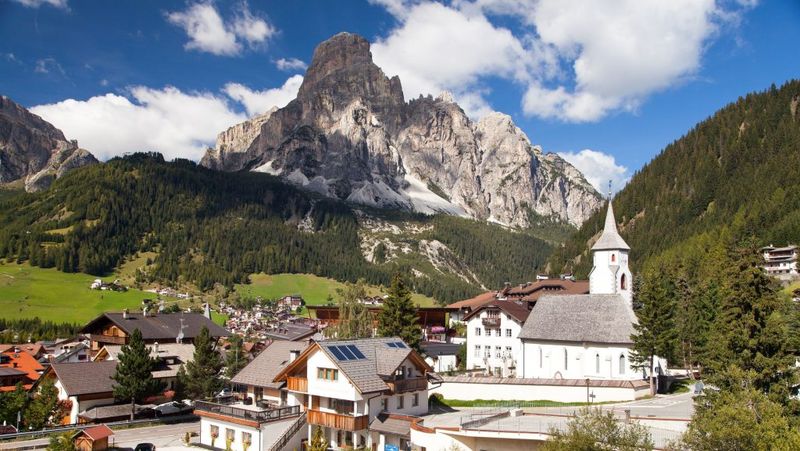
Strategically positioned at the intersection of four mountain passes, Corvara combines natural splendor with sophisticated amenities. The village sprawls across a wide valley floor, giving it a more open feeling than other Dolomite settlements tucked into narrow gorges.
Horse-drawn sleighs still operate alongside modern ski lifts in winter, creating a charming contrast between old and new. I’ve spent countless afternoons at Corvara’s outdoor cafés watching paragliders spiral down from surrounding peaks against impossibly blue skies.
Summer transforms the area into a mountain biking paradise with trails for every skill level. What makes Corvara truly special is its perfect balance – luxurious enough for comfort-seekers yet authentic enough to experience true mountain culture.
The local cheese festival in September shouldn’t be missed, featuring competitions where proud farmers showcase generations-old recipes.
7. Mysterious Arabba: The Mountaineer’s Secret Base
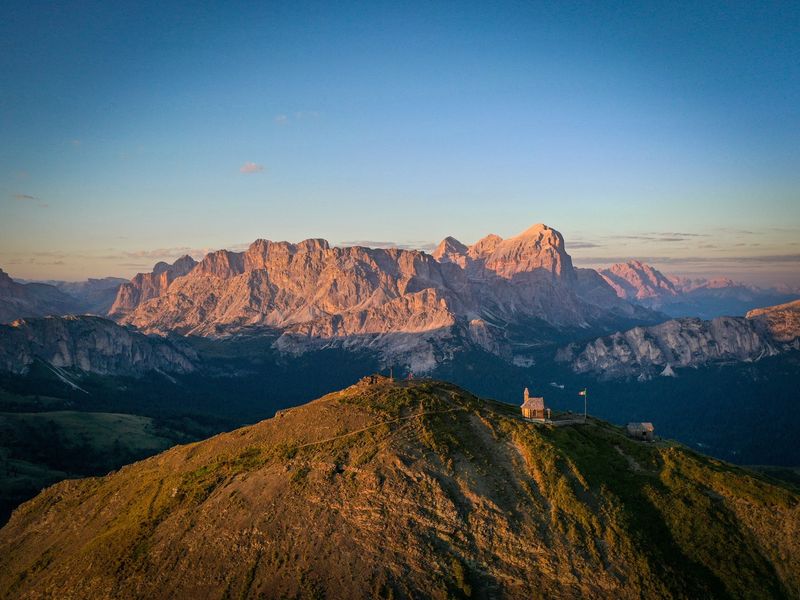
Rugged and less polished than its neighbors, Arabba attracts serious mountain enthusiasts seeking adventure rather than luxury. The village huddles beneath the imposing Sella massif, whose sheer cliffs create a dramatic backdrop that changes color throughout the day.
Stone buildings with thick walls built to withstand harsh winters give Arabba a fortress-like appearance. Local taverns serve hearty mountain food like polenta with game stew, perfect after a day conquering nearby via ferrata routes – iron-cable protected climbing paths created during World War I.
Though small, Arabba holds strategic importance as the gateway to the Pordoi Pass and Marmolada glacier. I’ve found some of my most memorable Dolomite experiences here, from watching sunrise alpenglow from my window to discovering hidden World War I bunkers while hiking.
The village’s rugged authenticity provides a refreshing contrast to more tourism-oriented destinations.
8. Fairytale San Martino di Castrozza: Pearl of the Pale Mountains
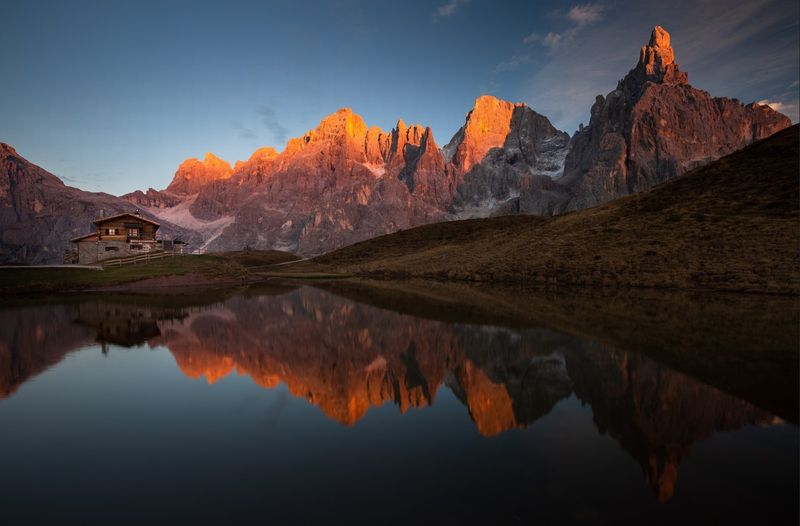
Framed by the spire-like peaks of the Pale di San Martino range, this village looks like it materialized from a fantasy novel. Unlike other Dolomite settlements with medieval cores, San Martino developed as a Victorian-era mountain resort, giving it a distinctive architectural character with grand belle époque hotels.
A gentle stream runs through town, crossed by small wooden bridges adorned with geraniums in summer. The village becomes magical at sunset when the surrounding limestone peaks glow with enrosadira – the famous pink alpenglow that bathes the Dolomites.
I’ve spent countless evenings here watching this natural light show from the village promenade while enjoying gelato. San Martino’s location in a provincial nature park means development has been carefully controlled, preserving both natural beauty and village atmosphere.
The weekly farmers market showcases local products like mountain honey, wild berry preserves, and aromatic cheeses.
9. Authentic Canazei: Heart of Val di Fassa

Life revolves around the central piazza in Canazei, where locals have gathered for centuries to exchange news and celebrate festivals. This vibrant village balances tourism with authentic mountain culture better than most, maintaining strong Ladin traditions while welcoming visitors.
Wooden balconies overflow with red geraniums in summer, creating postcard-perfect scenes against the backdrop of towering mountains. The village becomes especially enchanting during winter evenings when snow softly falls on illuminated chalets and the scent of mulled wine fills the air.
What makes Canazei special is its living traditions – like the annual Gran Festa da d’Istà summer solstice celebration featuring colorful processions in traditional costume. I recommend visiting the small but fascinating Ladin Cultural Institute to understand the unique heritage of this linguistic island.
Don’t miss trying local specialties like strangolapreti (spinach and bread dumplings) at family-run restaurants.
10. Serene Badia: Gateway to the Sacred Mountain
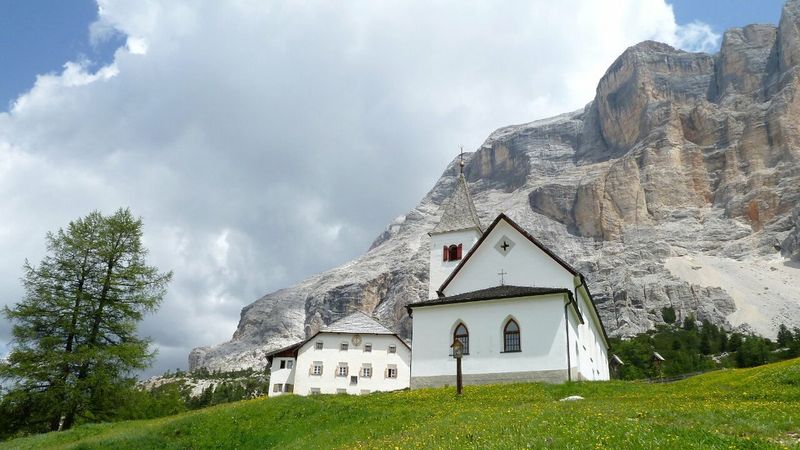
Silence is the first thing you’ll notice in Badia – a profound mountain quiet broken only by distant cowbells and church bells marking the hours. This peaceful village sits at the foot of the Santa Croce mountain, considered sacred by local Ladin people for centuries.
Ancient farmhouses with distinctive wooden shingled roofs cluster around a simple church whose bell tower serves as the village’s focal point. Morning mist often fills the valley, creating an otherworldly atmosphere as mountain peaks emerge like islands from a sea of clouds.
The pilgrimage church of Santa Croce perched high above the village draws both religious visitors and hikers seeking spectacular views. I’ve found Badia to be the perfect base for experiencing the Dolomites’ spiritual side.
Local families still observe ancient pre-Christian traditions blended with Catholic practices, especially during winter solstice celebrations that feature carved wooden masks and processions.
